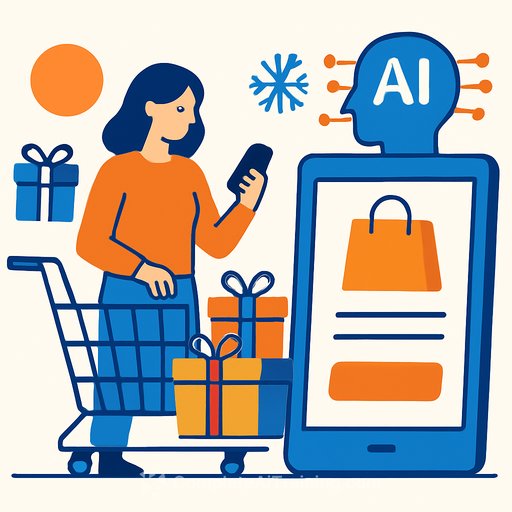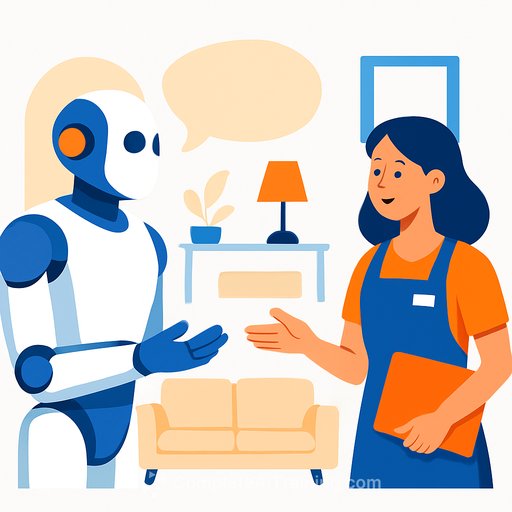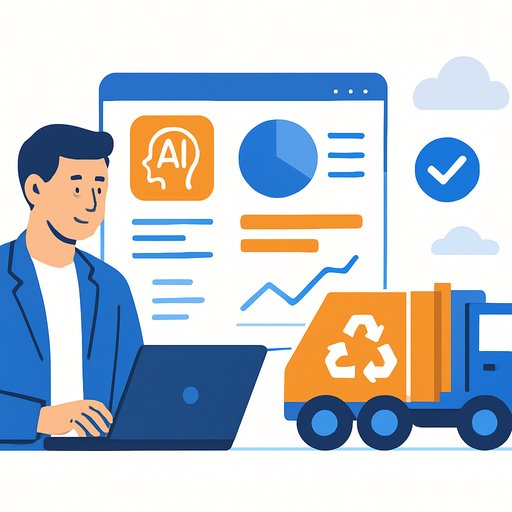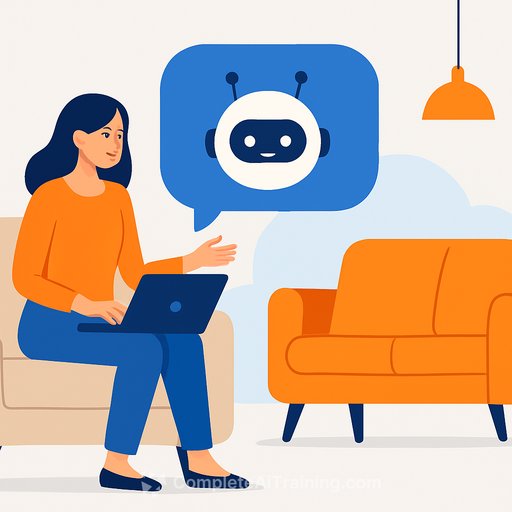Best AI Sales Platform: Top Tools and Software for B2B Sales Teams (2025 Guide)
Published: November 21, 2025
Your competitors are still grinding through spreadsheets and generic sequences. Meanwhile, AI-first teams spot deals earlier, personalize at scale, and move faster. Teams using AI report up to 50% more qualified leads and 30% shorter cycles. The catch is every tool now claims to be "AI." This guide separates substance from hype and gives you a practical way to choose what actually drives pipeline.
What Is an AI Sales Platform?
An AI sales platform uses machine learning, predictive analytics, natural language processing, and generative models to improve and automate core sales work. It doesn't just run if-then rules. It learns from patterns, makes recommendations, and adjusts based on outcomes.
Think beyond "if lead downloads a whitepaper, send sequence A." Real AI ingests hundreds of signals-engagement, timing, org changes, tech stack, and history-to propose the best next action for each prospect.
We've moved past basic automation and first-gen predictive scoring. Today's third wave brings opportunity detection, autonomous research agents, dynamic personalization, and conversation intelligence that guides you in real time.
Why Your B2B Team Needs AI
- Reclaim time: Offload research, enrichment, CRM updates, scheduling, and follow-ups so reps sell more.
- Find hidden revenue: Spot accounts entering a buying window before they hit public intent feeds.
- Prioritize perfectly: Predictive scoring that factors behavior, timing, org shifts, and lookalikes.
- Personalize at scale: Generate emails, decks, and value props for each account and persona.
- Speed up deals: See next-best actions, risk flags, and negotiation guidance as you work.
- Forecast with confidence: Models weigh deal patterns better than manual "gut" calls.
Typical results: 40-50% productivity lift, 25-35% higher win rates, and 20-30% shorter cycles. Compounding advantage kicks in as your models learn.
What Makes the Best AI Sales Platform?
- Real AI, not rule spam: Learning models, explainable predictions, and recommendations that adapt.
- End-to-end coverage: Prospecting through renewal, or seamless orchestration across your stack.
- Data quality: Verified contacts, clean company data, compliant enrichment, and reliable signals.
- Integrations that stick: CRM, email, calendar, meetings, and MAP-without data silos.
- Governed and transparent: Human oversight, explainability, brand controls, and safe outputs.
- Proven ROI: Clear reporting on time saved, conversion lifts, velocity, and forecast accuracy.
Top AI Sales Platforms by Category
All-in-One AI Revenue Platforms
- SalesPlay (MarketsandMarkets): Integrated system with six AI agents for early opportunity detection, personalized sales kits, and guided actions. Stands out for acting on live revenue shifts, not just surfacing research.
- Outreach: Workflow-first orchestration. AI agents surface best-fit prospects, automate research, and align teams on stakeholder priorities with recommended next steps.
- Regie.ai: Generative and analytical AI for campaigns end-to-end-email verification, call scripts, social posts, sequencing, and inbound response handling.
AI-Powered Prospecting and Intelligence
- Cognism: Cortex AI governs sourcing, matching, and validation. Phone-verified mobiles, Bombora-powered intent, and AI research for contextual company insights. Natural language search makes prospecting fast.
- Clay: Enrichment and lead profiles at speed. Pulls from LinkedIn, runs AI enrichment, and uses Claygent to analyze sheets, classify accounts, and draft outreach.
- ZoomInfo: Large-scale B2B intelligence, intent, technographics, and org charts with predictive analytics to flag in-market accounts.
AI Sales Engagement and Outreach
- Overloop AI: Hyper-personalized email generation and multi-channel sequences. Targets lists or in-platform data while keeping messaging specific to pain points.
- Postaga: Campaign builder that analyzes your domain and spins up cold sales, link building, or promotion sequences with AI-generated copy and timelines.
- Salesloft: Cadence intelligence with Rhythm AI for timing and action recommendations, plus templating and analytics.
AI-Enhanced CRM and Sales Intelligence
- Salesforce Sales Cloud (Einstein): Einstein Copilot drafts emails, summarizes interactions, scores leads, forecasts, and recommends actions inside the CRM.
- HubSpot Sales Hub: Predictive lead scoring, AI email sequences, and pipeline forecasting built into a user-friendly workflow.
- Pipedrive: AI assistant for deal probabilities, activity tips, and email insights that help reps focus on the highest-impact work.
Conversation Intelligence and Coaching
- Gong.io: Analyzes calls to highlight drivers of wins, objection patterns, competitor mentions, and behaviors tied to success.
- Fireflies.ai: Records, transcribes, summarizes, and syncs notes to CRM. Frees reps to focus during calls.
- Avoma: Topic detection, live bookmarks, keyword tracking, and AI scorecards for sales meetings.
- Dialpad: Real-time coaching with trigger-based assist cards, AI recaps, and QA scorecards.
AI Email Optimization and Coaching
- Lavender: Inbox coaching trained on 1B+ emails. Scores clarity, personalization, mobile rendering, and CTA strength. Personalization Assistant feeds lead data into your draft.
- Crystal: Predicts DISC-style preferences and provides voice-and-tone guidance plus personality-matched sequences.
- Copy.ai: GTM content workflows for social, LinkedIn posts, blogs, and repurposing long assets.
Additional Specialized Platforms
- My AI Front Desk: Virtual receptionist that holds natural phone conversations, books meetings, and routes calls.
- Zapier Agents: AI orchestration across 7,000+ apps to automate enrichment, alerts, and syncs end-to-end.
- InsightSquared: No-code forecasting and analytics with 350+ reports and pipeline review insights.
- Cirrus Insight - Meeting AI: Auto-researches companies and contacts before meetings and pushes insights to your workflow.
- Empower by Ringover: Conversational AI with sentiment detection, summaries, transcriptions, and call scoring.
Key Features to Look For
- Intelligent prospecting: Firmographic, technographic, intent, and org-change signals with natural language search.
- Predictive analytics: Lead and deal scoring, timing predictions, and forecast models with explainability.
- Automated research: Company background, priorities, tech stack, org charts, and recent events-no manual digging.
- Personalization at scale: Emails, decks, and value props that reflect industry, role, and current pains.
- Multichannel orchestration: Email, phone, social, and direct mail with AI-optimized timing and mix.
- Conversation intelligence: Topic and sentiment tracking, objection detection, and coaching insights in real time.
- Deal guidance: Risk signals, next-best actions, content suggestions, stakeholder mapping.
- CRM integration: Bidirectional sync, auto-enrichment, and surfaced insights inside your CRM.
- Compliance: GDPR/CCPA alignment, audit trails, consent management, and model transparency. See GDPR and CCPA.
- ROI tracking: Clear attribution to time savings, conversion lifts, velocity, and forecast accuracy.
How AI Sales Platforms Work (End-to-End)
Stage 1: Account Targeting and Opportunity Detection
AI flags ICP-matched accounts showing timing signals-org moves, tech changes, budget cycles, and market shifts. It enriches each account and identifies the right stakeholders.
Stage 2: Deep Account Research and Insights
Agents scan earnings calls, press, hiring, product updates, and social. You get triggers tied to your value prop and a view of which offers align best.
Stage 3: Personalized Engagement Kits
Auto-generated decks, email sequences, discovery questions, ROI angles, and objection battlecards-built for the account, role, and current priorities.
Stage 4: Intelligent Multichannel Outreach
AI selects channels and timing, runs tests on copy, and adapts sequences based on opens, clicks, and replies across email, phone, and social.
Stage 5: Real-Time Conversation Support
Live transcription, prompts, and guidance during calls. Afterward, summaries, CRM updates, and suggested follow-ups are handled automatically.
Stage 6: Deal Progression and Risk Management
The system tracks velocity, stakeholder coverage, and engagement patterns to flag risks early and recommend actions to keep momentum.
Stage 7: Forecasting and Pipeline Management
Leaders see which deals will land this quarter, where upside exists, and which need attention now-without last-minute guesswork.
Stage 8: Post-Sale and Expansion
AI monitors health signals, renewal risks, and upsell triggers. It alerts your team when customers are showing interest or slipping.
Implementation Best Practices
- Define success: Pick 3-5 metrics that matter-qualified leads, cycle time, win rate, forecast accuracy, hours saved.
- Start narrow: Launch with 2-3 high-impact use cases like lead scoring, email personalization, or call insights.
- Fix data first: Audit CRM hygiene, set governance, and connect all essential sources before training models.
- Train for outcomes: Show reps how AI helps them close, not just how to click buttons.
- Blend human and AI: Clarify when to follow recommendations and when to use judgment.
- Iterate weekly: Track adoption, get feedback, tune models, and refine workflows.
- Broadcast wins: Share stories of deals accelerated by AI to drive buy-in.
Where This Is Heading
- Autonomous agents: Research, qualify, schedule, and perform first-touch conversations on autopilot.
- Hyper-personal everything: Emails, decks, proposals, and terms adjusting to each stakeholder's style and priorities.
- Predictive revenue intelligence: Forecast which accounts will enter cycles months ahead of time.
- Integrated GTM systems: Sales, marketing, and CS orchestrated by shared AI workflows.
- Ethical, explainable AI: Transparency and governance become must-haves as regulations tighten.
How to Choose: A Practical Framework
- Pain points first: Is your bigger drag prospecting, personalization, deal coaching, or forecasting?
- Data readiness: Do you have clean CRM data and consent processes locked?
- Workflow fit: Will reps live in it daily, or will it add friction?
- Integrations: Does it natively sync with your CRM, inbox, calendar, and meeting tools?
- Explainability: Can you see why the AI scored or recommended something?
- Proof: Demand a demo on your data and ask for customer references with real outcomes.
If you want structured, sales-focused AI upskilling for your team, explore curated options here: AI courses by job role.
Conclusion
AI platforms multiply what already works in your sales motion. Pick tools that improve prospecting quality, reduce admin, sharpen conversations, and tighten forecasts. Keep humans in the loop for relationships and strategy. The teams that win use AI to remove friction, focus attention, and compound learning across every deal.
FAQs
What is an AI sales platform?
Software that learns from your data to automate research, scoring, personalization, deal guidance, and forecasting-continuously improving with outcomes.
How much does it cost?
Rough ranges: $25-50 per user/month for entry, $100-300 mid-tier, and $500+ for enterprise-grade features and data. Many offer usage-based or custom pricing.
What's the difference between AI and basic automation?
Automation follows fixed rules. AI analyzes behavior and context to choose timing, channel, and message, then adapts based on results.
Will AI replace B2B reps?
No. It removes grunt work and surfaces insights. Humans handle relationships, strategy, and complex negotiations.
Top benefits?
More qualified pipeline, faster cycles, higher conversion, less admin, better forecasts, and real-time coaching. Expect 20+ hours saved per rep per week in many cases.
Implementation timeline?
2-8 weeks depending on complexity and integrations. You'll see meaningful gains once data is connected and teams are trained.
Must-have features?
Predictive scoring, automated research, AI personalization, conversation intelligence, CRM sync, deal guidance, forecasting, and governed AI.
Will it integrate with my CRM?
Leading platforms connect with Salesforce, HubSpot, Microsoft Dynamics, and Pipedrive with bidirectional sync.
How do I measure ROI?
Track time saved, qualified leads per rep, conversion rates, cycle length, forecast accuracy, CPA, and revenue per rep.
What data is required?
CRM records, engagement data, calendar and meeting history, call recordings, website behavior, win/loss outcomes, and external market signals.
Best tools right now?
All-in-one: SalesPlay, Outreach. CRM AI: Salesforce Sales Cloud, HubSpot. Prospecting: Cognism, Clay. Email coaching: Lavender. Conversation intelligence: Gong.io.
What are AI outreach tools?
Systems that generate messages, schedule multichannel sequences, test variations, and optimize timing based on engagement patterns.
Can AI write sales emails?
Yes. It uses prospect and company context to produce relevant messages that pass a quick human edit.
What is conversation intelligence?
Recording, transcription, and analysis of sales calls to surface winning behaviors, objections, and next actions-plus automated summaries.
How accurate is AI forecasting?
High with clean data and steady usage. Accuracy improves as models learn from more closed outcomes.
Is AI lead scoring worth it?
Yes. It weighs far more variables than manual methods and consistently improves focus and conversion.
Predictive AI vs. generative AI?
Predictive forecasts outcomes and recommends actions. Generative creates content like emails, decks, and talk tracks. The best platforms combine both.
How do I choose the right platform?
Map your pain points, validate real AI capability, test integrations, demand explainability, and require proof with your data.
Are these tools compliant?
Reputable vendors align with GDPR and CCPA. Always verify certifications and data handling.
Can small teams benefit?
Absolutely. AI multiplies output per rep-research, personalization, and follow-ups handled in the background.
AI assistant vs. AI platform?
Assistants tend to be single-purpose. Platforms cover multiple stages with connected AI across prospecting, engagement, pipeline, and forecasting.
What are the risks?
Over-relying on AI, poor data hygiene, generic outputs, biased models, and compliance gaps. Governance and human review solve most of this.
Do I need technical skills?
No. Modern tools are no-code with guided setup. Focus on clean data and clear workflows.
How does AI improve productivity?
By removing manual tasks, prioritizing high-value actions, generating content, coaching live, and surfacing insights you'd otherwise miss.
What is sales AI orchestration?
Coordinating multiple AI tasks and tools so signals in one system trigger actions across your stack-without manual effort.
Your membership also unlocks:






